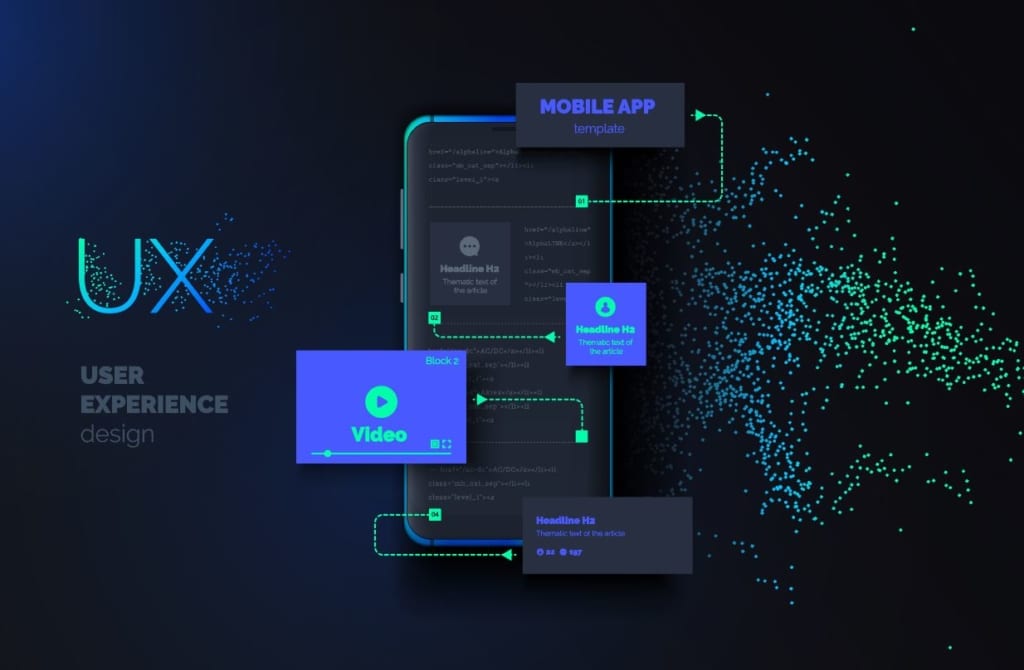
GOOD UX IS IMPORTANT. HERE’S HOW TO DELIVER IT.
A good user experience can help your company boost conversions, retain customers and reduce support costs. Ken St. Onge started the UX Writing team at The Hartford and is now director of User Experience for the investment and insurance giant. Here, he answers our questions.
Connecticut Innovations: Thanks for taking the time to talk with us, Ken. Tell us: Why is UX such an important issue for startups to address?
 Ken St. Onge: Most startups deal with new products, markets, business models or brands. So they start with an uphill battle to win people over. A good user experience helps people “get it.” It makes it easy to understand the startup’s unique value. That’s especially true when a startup does things digitally. There are so many great apps and experiences out there that people have become conditioned to expect good digital experiences. So if you’re a startup, you need to get digital right. Plus, when you have a great digital experience, the market is more likely to see you as innovative. Finally, when you have a strong user-experience mindset, you make better products. Design-thinking lays the groundwork for you to reconsider some basic ideas about what you do and how you do it. You’ll make things better and make better things. Ultimately, that’s what gives you the best shot at success.
Ken St. Onge: Most startups deal with new products, markets, business models or brands. So they start with an uphill battle to win people over. A good user experience helps people “get it.” It makes it easy to understand the startup’s unique value. That’s especially true when a startup does things digitally. There are so many great apps and experiences out there that people have become conditioned to expect good digital experiences. So if you’re a startup, you need to get digital right. Plus, when you have a great digital experience, the market is more likely to see you as innovative. Finally, when you have a strong user-experience mindset, you make better products. Design-thinking lays the groundwork for you to reconsider some basic ideas about what you do and how you do it. You’ll make things better and make better things. Ultimately, that’s what gives you the best shot at success.
CI: Who in the organization is ideally suited to champion UX as a goal?
KSO: Everyone. But certain roles help set the tone. For smaller startups, it’s anyone in a design role, whether they design the product, the app or the website, or other ways to access the product or its features. They need customer-centric thinking. So does anyone in a product management or product ownership role. They’re usually making regular decisions about how to evolve the product, so they need to understand a user’s point of view. The same goes for service, sales and anyone who has significant touchpoints with customers. They need to make sure they deliver an experience that meets the organization’s goals. Finally, leadership support is critical. The founders and senior leaders need to believe in the power of great experiences and make sure everyone else understands why they’re important.
CI: You’ve said that people should design the user experience holistically. What do you mean by that?
KSO: A user experience is not an isolated thing. You must look at things end-to-end. Consistency matters. If it’s delightful to buy your product, but difficult to get service, you have a lot of work to do on the experience side. That’s why a tool like a customer journey map makes a big difference. It helps you understand how every touchpoint affects a user. Emotion is a fundamental component of any product, so make sure you really understand the emotional aspects of the experience. Once you understand how users experience things, you can start improving. But be consistent with your brand and experience goals. And design in a way that lives up to your standards at every phase of the journey. That’s how to create delightful experiences and remarkable brands.
CI: Why is digital content so fundamental to user experience?
KSO: Great writing matters now more than ever. Content intertwines with the product. It’s a major way that users experience it. So you need to look at copywriting as a key business and design function. But no matter who does it or what you call it, recognize that the way you write and say things matters.
Designers and product teams in many different industries have started to realize how important writing is to the experience. It’s a particularly hot topic for startups these days. It’s also the basis for a new field known as UX writing. UX writing basically means the buttons, help text or other guidance you read inside of apps. In our case, it would be what you read if you were to log in, pay a bill or check your policy, for instance.
I’m proud to say we were ahead of the curve at The Hartford. We created a UX writing team almost four years ago to make sure that our writing is consistently clear, compelling and easy to understand. When a user goes online to pay a bill, for instance, UX writers have already gone through every step in the process to make sure the instructions were easy to understand, and that users could do what they needed to do quickly. It’s never over. We constantly test it and try to improve based on feedback. Good design is iterative. It never ends.
CI: How do you define “plain language”?
KSO: In general, plain language means words that everyone understands. It means communications without jargon or phrases that confuse people. It means short sentences and simple explanations. In health care, plain language has specific rules and regulations. But the basic idea is the same: It’s a way of writing that’s accessible to everyone.
To me, the most important thing is where you use plain language.
CI: Many people think it’s about dumbing down content, but that’s not it at all, right?
KSO: Plain language makes your brand approachable because it helps people understand what you’re offering and how to get it. A great experience starts with clarity. Plain language is the best tool to help you simplify things and bring that clarity.
Plain language is also important because it speeds users through the buying process. When you clearly spell out what to do and why, it helps eliminate friction in the sales process. The same is true for people who need service or help. Plain language makes it easier for users to help themselves. Phone calls and service help are a significant expense for startups, which tend to run pretty lean. Plain language can help you chip away at those costs.
One more thing: Plain language is critical in business-to-business sales, not just consumer-facing sales. Research backs this up. Business users may be savvy about a particular topic or product category, but that doesn’t mean they like technical information, run-on sentences and jargon. They’re just like you and me: They want things to be as clear as possible. No matter who you’re writing to, just write like you talk. People will get it. You’re in business to win customers. You won’t win them with confusion.
CI: A few years ago, everyone wanted to hire a content strategist, and now it’s all about content design. Why the shift? And what do you recommend that a startup, with a limited budget, focus on?
KSO: Like anything innovative, there’s a lot of specialization in digital fields. Those roles sometimes overlap, but there is a bit of difference. I associate “strategy” roles with using content to drive awareness—finding prospects and converting them into leads. That means planning SEO or social campaigns, for instance. “Design” to me deals more with the building blocks of an experience from awareness to sales to service and so on. It’s the stuff people look at during a digital experience. The designer’s mindset is more about transparency, so they often think in plain language. The strategist’s mindset is more about winning eyeballs and breaking through the noise, so they think more in keywords. They both use words, but with different goals and in different ways.
If I were working on a digital startup right now, the first thing I’d do is look at every screen and element and really read what’s going on. Keep doing it over and over. Criticize it. Rewrite it. Ask the rest of the team how it sounds. Try to follow your own instructions and see if they make sense. There are simple tools like readability checkers that can help tell you how difficult it is to read something. Use them. Get it down to something really, really easy and see how the flow looks. Does it still make sense? Keep trying to simplify until it’s as simple as it can be. If possible, get some customers and watch how they use your application. Ask them questions about what they’re doing. Watch where they speed through things. Take note of where they get tripped up. You’ll soon start to figure out what, if anything, needs changing. Once you do that, never stop. Make it a habit.
CI: You say that user experience should progress as an evolution rather than a revolution. What do you mean by this?

KSO: Ideas constantly get perfected. That’s the nature of design. Even if a revolutionary idea or product is great right out of the gate, there will always be room to evolve and improve. The surest path to greatness is to be deliberate and thoughtful in how you change things. As you grow, you get more users. That means more feedback and insight into what works and what doesn’t. It shows you opportunities and weaknesses, and you can evolve the design to be better. Those thoughtful evolutions compound over time and add up to big changes. So even if you were revolutionary to start, it’s your evolved design that keeps pushing toward success.
CI: Thanks for sharing your expertise with us, Ken.
KSO: My pleasure.